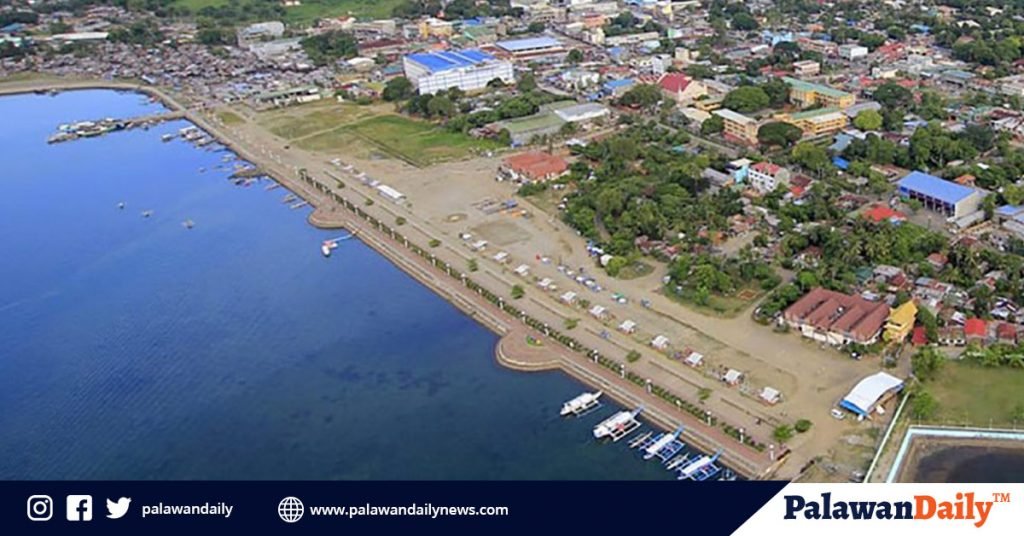In an effort to protect the city’s coastal waters, specially beaches frequented by the public, an ordinance that will require coastal barangays in Puerto Princesa City to conduct monthly coastal cleanup was proposed.
City Councilor Jimmy Carbonell, who is also the chairman of the Committee on Environmental Protection and Natural Resources of the Sangguniang Panlungsod, said on Wednesday, August 26, 2020, that he sponsored the proposed ordinance known as the Monthly Coastal Clean-Up for Coastal Barangays in the City.
He said that a couple of netizens posted their complaints on social media with photos taken at the coast of piled up trash left by beach goers at Nagtabon Beach, Barangay Bacungan.
The draft of the proposed ordinance, also include some of the photos posted by some netizens in Facebook taken on July 19, 2020, with litters scattered around the beach by irresponsible beachgoers such as empty chichirya wrappers, empty cigarette packs, empty cans of softdrinks, empty plastic bottle of mineral water, and empty glass bottles of Emperador Light and Ginebra San Miguel-fourside.
The social media post in Nagtabon beach was also posted by Palawan Daily News.
Carbonell emphasized that there is a need to conduct a monthly coastal cleanup and prevent the spread of wastes into our coastal areas. This will also protect children from being wounded by nails and broken glass bottles.
“It is imperative to conduct a monthly coastal clean-up, specially in barangays that has jurisdiction over our public beaches such as Nagtabon, Talaudyong and Tagkawayan Beach,” he said.
Carbonell explained that pursuant to the Republic Act 9275 also known as the Philippine Clean Water Act of 2004, that the State shall pursue a policy of economic growth in a manner consistent with the protection, preservation and revival of the quality of our fresh, brackish, and marine waters. To achieve this end, the framework for sustainable development shall be pursued.
The proposed ordinance cited the Section 16 of the Republic Act 7160 or the Local Government Code of 1991 that provides that local government units shall ensure and support, among other things, the preservation and enrichment of culture, promote health and safety, enhance the right of the people to a balanced ecology.
The proposed ordinance also mentioned the studies of scientist Dr. Teresita M. Espino of the National Institute of Molecular Biology and Biotechnology that showed that severe pollution in the ocean is one of the causes of paralytic shellfish poison most commonly known as Red Tide.
“When there is so much waste, it becomes conducive to the growth of microorganisms that deplete the oxygen,” Dr. Espino said in her study.
This proposed ordinance, once enacted, will be enforced by the L.iga ng mga Barangay, City Tourism Office, City Solid Waste Management Program and other concerned offices.
The penalties for leaving all types of trash and litter in the beach and coastal areas ranges from P1,000 to P5,000.
Jean-Paul Ductoroy, professor emeritus in Coastal Sciences and Management at the University of Hull, in England in his book Coastal Pollution and Impacts published in 2019, said that coastal and estuarine ecosystems have been, heavily influenced by humans through pollution and habitat loss worldwide.
It presented that over 80 percent of all marine pollution originates from land-based sources which are primarily industrial, agricultural and urban. Besides altering the marine environment, pollution also causes economic losses,
Today, coastal and marine pollution continue globally, resulting in the steady degradation of coastal and marine ecosystems. Indirect or diffuse contributions from different sources, either from coastal informal settlers, beachgoers, and other contributors are usually widespread low-level discharges and likely result in chronic pollution, a threat to the Puerto Princesa City’s good image and as a prime tourism destination.
